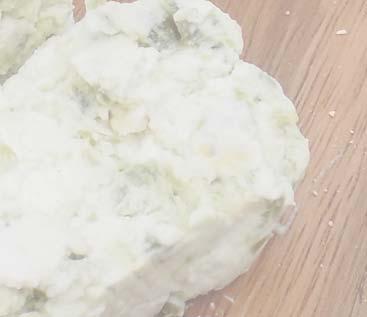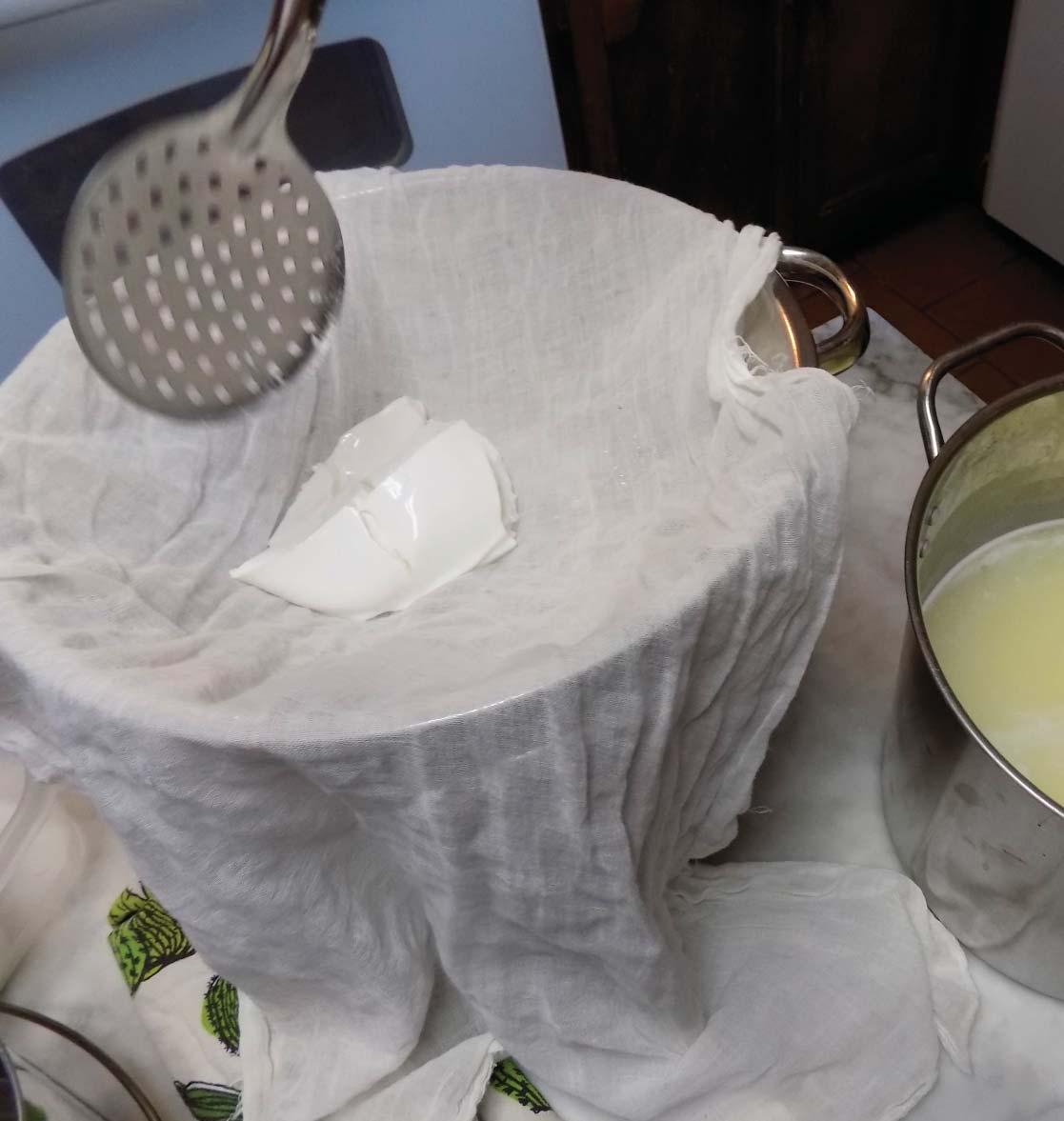
5 minute read
TABLE OF CONTENTS
Goat milk not only supplies a wonderful palate of flavorful and distinctly tangy cheeses but gives a wide range of health benefits to the consumer. This fresh chevre cheese is from Asher farm.
HEALTH BENEFITS OF GOAT CHEESE calcium phosphorus copper selenium magnesium niacin (vitamin B3)
Advertisement
Source: healthline.com



Say

“Cheese!”Cheese!”
Goat cheese offers health benefi ts


Goat cheese comes in a wide variety of flavors and textures, from soft and spreadable fresh cheese to salty, crumbly aged cheese. Although it’s made using the same coagulation and separation process as cheese made from cow’s milk, goat cheese differs in nutrient content. Clanton residents Wayne and Anita Andrews of Asher Farm breed Nigerian Dwarf Goats (which produce rich milk) with Saanen Dairy Goats (which are known STORY AND PHOTOS BY ELISABETH ALTAMIRANO-SMITH
for the quantity of milk.) Each nanny goat produces up to two gallons of milk per day. Asher Farm uses herbal medicines and vitamins to heal and boost the goat’s health and immune system. In return, the goats supply milk for a wonderful palate of flavorful and distinctly tangy cheeses that give a wide range of health benefits to the consumer.
“Farming has always been part of my life,” said Anita. “My grandparents, Fonzi and

Ida Mae Mullins were tenant farmers for Jimmy Durbin. They grew peaches, peanuts and watermelons. I wanted to get back to that kind of lifestyle.”
Anita begins every morning with milking and feeding the farm animals. Some mornings are raining and below freezing, but Anita laces up her boots and heads to the milking barn. The nanny goats are eager to be milked and run with delight to the milking machine. Anita begins by
After the goat milk mixture has rested for a day, Anita carefully sifts out the clumps of curds that have solidified, placing them into a butter muslin cloth to drain for an additional 24 hours.

WE HELP YOU HOME.


WE HELP PATIENTS LIVE EACH DAY TO THE FULLEST.
cleaning the udder with a natural disinfectant. The milking of each goat takes approximately 20 minutes. Afterward the disinfectant is reapplied to the udder to protect against mastitis — an infection common in lactation. “It is amazing that in nature, God created each baby goat to have a natural enzyme in its saliva which protects the mother against mastitis,” Anita said “That enzyme keeps the mother and udder safe, and there isn’t a need

DON’T MISS A THING BECAUSE OF YOUR PAIN.

Schedule your appointment today.

&ELLOWSHIP4RAINEDs0ATIENT&OCUSED
Steven A. Barrington, MD
Arthroscopy and Total Joint Surgery Michael E. Davis, MD Spine Surgery Charles W. Hartzog, Jr., MD Sports Medicine D.D. Thornbury, MD Foot and Ankle Surgery Hussein W. Turki, MD
Hand and Upper Extremity Surgery G. Dexter Walcott, Jr., MD Sports Medicine

Milking for cheese: A serving of goat cheese provides calcium, phosphorus and copper — nutrients that are essential for healthy bones.





for the disinfectant in the wild.”
After milking, Anita sets the stainless-steel urns into a hotwater bath to begin making the cheese. The milk is warmed until its temperature reaches 86 degrees. When the milk reaches the desired temperature, rennet and a mesophilic culture are added and the mixture is left to sit for 24 hours. Goat cheese is known as Chevre, (pronounced SHEV; French for “goat cheese”), and begins to coagulate in this process becoming thicker.
Chevre cheese provides healthy fats, including medium-chain fatty acids, which can make a person feel satisfied and benefit weight loss, according to registered dietitian Jillian Kubala in a Healthline article. The medium-chain fatty acids quickly break down and are absorbed by the body, making them less likely to be stored as fat. Although the recommended serving size for goat cheese is small, eating just one ounce provides a good source of selenium, magnesium and niacin (vitamin B3). A serving of goat cheese also provides cal




cium, phosphorus and copper — nutrients that are essential for healthy bones.
Goat cheese can also contain a wide variety of probiotics. Diets rich in chevre show promoted digestive health, reduced inflammation and boosted immunity. Goat cheese is also easier for the body to digest.
After the milk mixture has rested for a day, Anita carefully sifts out the clumps of curds that have solidified, placing them into a butter muslin cloth to drain for an additional 24 hours.
“The last step is to add salt to the cheese,” said Anita. “The salt protects against the growth of bacteria and helps the cheese dry.”
The ending result is a lovely, white spreadable cheese with a unique tangy flavor.
Andrews will host a cheesemaking class March 12, 6-8 p.m. at 703 Newport Avenue in Clanton. Cost is $25 and includes materials, instruction and sampling. Preregister by contacting Anita Andrews at (205) 479-9291. For more information, visit www.themarketatnewport.com.














